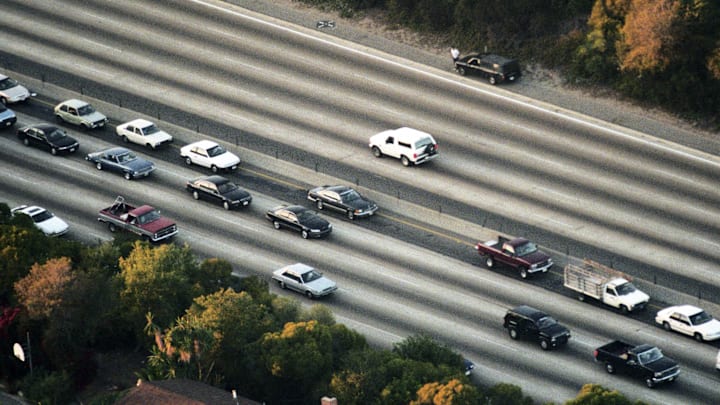Revisiting O.J. Simpson's Interruption of Knicks Finals Game

In this story:
To New York Knicks fans, Monday, June 17 marks the 30th anniversary of one of the most bittersweet moments in franchise history. A national perspective, however, sees the day as the de facto tip-off of one of the most prevailing cultural phenomenons and occurrences in American history.
As the Knicks battled the Houston Rockets in Game 5 of the 1994 NBA Finals, former NFL running back O.J. Simpson led Los Angeles police on a low-speed chase after a warrant for his arrest was issued in connection to the murder of his ex-wife Nicole Brown and her friend Ron Goldman.

The chase across Los Angeles freeways tipped off what has been described as the most publicized criminal trial in American history. Simpson, who died in April, was eventually acquitted in October 1995 but was found liable for Brown and Goldman's deaths in a civil suit filed through the victims' families.
Simpson originally agreed to turn himself into the LAPD but instead took into the LA highways in a white Ford Bronco driven by his former Buffalo Bills teammate Al Cowlings. With Simpson said to be a suicide risk, officers followed behind at a low speed before the chase eventually ended at his Brentwood estate.
The Simpson chase interrupted broadcasts across the country, including NBC's coverage of the Knicks-Rockets game. NBC, which had Simpson on its payroll as an NFL sideline reporter at the time, switched to a split-screen, giving the Simpson situation priority by muting Marv Albert and Matt Guokas' commentary for coverage from the news division's Tom Brokaw. Over 95 million Americans were said to have viewed the chase in some way, shape, or form.

Simpson's arrest overshadowed a triumphant day in New York sports: the Knicks took a 91-84 decision from the Rockets at Madison Square Garden to take a 3-2 lead in the best-of-seven series mere hours after their icy brothers, the New York Rangers, hosted the championship parade to commemorate their long-awaited victory over the Stanley Cup Final.
Word of Simpson's apparent attempt to flee reached MSG and members of the Rockets recalled seeing glimpses of the chase on courtside televisions until head coach Rudy Tomjanovich put a stop to it.
"That was a crazy moment, man," Vernon Maxwell recalled to Mike Lacett of WGHP. "I was in the game playing. The guys on the bench, they were talking about it ... Like why you running? Why you putting a gun to your head?”
On the Knicks' side, head coach Pat Riley was asked about Simpson's arrest in his postgame comments by an inebriated fan that had made his way into the press conference. Then-assistant coach Jeff Van Gundy later relayed that Cowlings told Riley that Simpson had requested to listen to the final minutes of the game on the radio toward the end of the chase.
"He ran into the driver of the car, A.C. Cowlings, at a car wash," Van Gundy said during the 2016 Finals. "(Cowlings) waved him over and proceeded to tell them the story of why they were driving so slow was, O.J. wanted them to hear the end of the game on the radio before he pulled in."
"When Coach Riley told us that story, I was mesmerized by what really goes on. I could just see him having the gun to his head, saying, “Turn up the radio, A.C., so I can hear the last few minutes.”

Geoff Magliocchetti is a veteran sportswriter who contributes to a variety of sites on the "On SI" network. In addition to the Yankees/Mets, Geoff also covers the New York Knicks, New York Liberty, and New York Giants and has previously written about the New York Jets, Buffalo Bills, Staten Island Yankees, and NASCAR.
Follow GeoffJMags